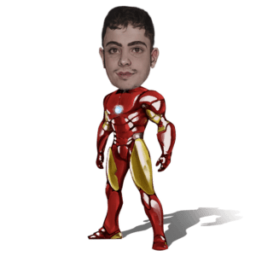A transducer is a device that transforms energy from one form to another. There are many great examples of transducers that will help you in understanding this device better.
Common Examples
Speaker: the speaker is a cone that vibrates and moves. The vibration and movement generates pressure waves in the air (also known as sound waves). The speaker is an electromechanical transducer that converts electrical energy to mechanical energy.
Ears and brains: did you know that your ears and brains are transducers of some kind? The two receive pressure waves and convert them to electrical brain impulses that allow you to perceive sound.
Light bulb: it converts electrical energy to light energy.
Water heater: a water heater contains a tube where cold water flows through before it’s heated. Inside the tube there is an impeller that spins only when you turn on the hot water.
When the impeller spins, it triggers a sensor that switches on the electric current which heats the water as it flows through the heating elements in the water heater. The impeller in this case is the transducer.
Categories
Transducers are categorized in many different ways which include:
Primary: primary transducers work on the principle that the input sensor detects or senses an immeasurable data such as mass, heat, depth and density. The sensor then converts the received signal into readable information which is controlled by an on/off switch. Great examples of primary transducers are thermocouples and thermistors.
Active and passive: they are classified depending on the type of power sources they have. Passive transducers produce power output from palpable mechanisms such as external power. Great examples are resistive, inductive and capacitive transformers.
Active transducers on the other hand get their power from physical loads. They then produce their own current and voltage outputs. Great examples of active transducers are piezoelectric crystals, thermocouples and photovoltaic cells.
Analog and digital: analog transducers transmit a continuous analog reading of the signal that it receives. Great examples of these transducers are thermistor and strain gauge.
A digital transducer creates a non-continuous pulse of the signal that it receives. Great examples are vortex flow meters and beam instruments.
Conclusion
This is what you need to know about transducers. There are many brands of transducers in the market; however, not all of them are good for you. Before making the purchase always ensure that you do your research and find the best store to buy from.
AUTOPOST by BEDEWY VISIT GAHZLY

